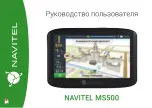
Flight Management System (FMS) for the Agusta AW139/AB139 Helicopter
A28--1146--181
REV 3 Mar 2009
Flight Plan
7-2
Honeywell International Inc. Do not copy without express permission of Honeywell.
D
Primary/Alternate Independence
-- The primary and alternate
flight plans are kept independent from one another. Revisions to
either the primary or alternate flight plan do not affect the other. The
following exceptions apply:
— ALTERNATE
-- The ALTERNATE prompt is the revision function
that incorporates the alternate into the active flight plan. The
ALTERNATE prompt is displayed on the ACTIVE FLT PLAN
page (6L) when the aircraft is within 25 flight plan miles of the
primary destination. After ALTERNATE is selected, two
destinations are in the flight plan: the original and the alternate.
Both the original and the alternate are treated as destinations
and the FMS can flyover both destinations. When both are
treated as destinations, flyover means the FMS does not begin
turning before the aircraft flies over the destination.
The ALTERNATE prompt is not displayed when an approach is
in the flight plan. However, when the missed approach is
activated, the ALTERNATE prompt is displayed. A direct--to an
alternate flight plan is permitted at any time.
— ALTERNATE ORIGIN
-- The alternate flight plan origin is also the
primary flight plan destination.
D
Waypoint Names
-- Waypoints exist in the navigation database, as
the custom database (pilot--defined waypoints), or as temporary
waypoints. Waypoint names are used for convenience in keeping
track of waypoints and recalling waypoints. Waypoint names (called
waypoint ident or identifier) must contain at least one and as many
as five alphanumeric characters. In the case of temporary
waypoints, the FMS adds an asterisk (*), ampersand (&), or pound
sign (#) as the first character for a total of up to six characters.
Therefore, the pilot has complete freedom in naming waypoints into
the FMS with no conflict. Waypoint and flight plan names are
distinguished by the number of characters.
Unnamed airway intersections are also included when airways are
added to the flight plan. This means airways are changed at a point
common to both airways.
The ampersand (&) symbol denotes waypoints with a radial pattern
for the stored flight plan.
Nondirectional beacons (NB) are stored by the IDENT plus the NB
suffix. For example, the ABC NDB is stored in the database as
ABCNB. This reduces the list of duplicate waypoint names.
Summary of Contents for FMZ Series
Page 3: ......















































